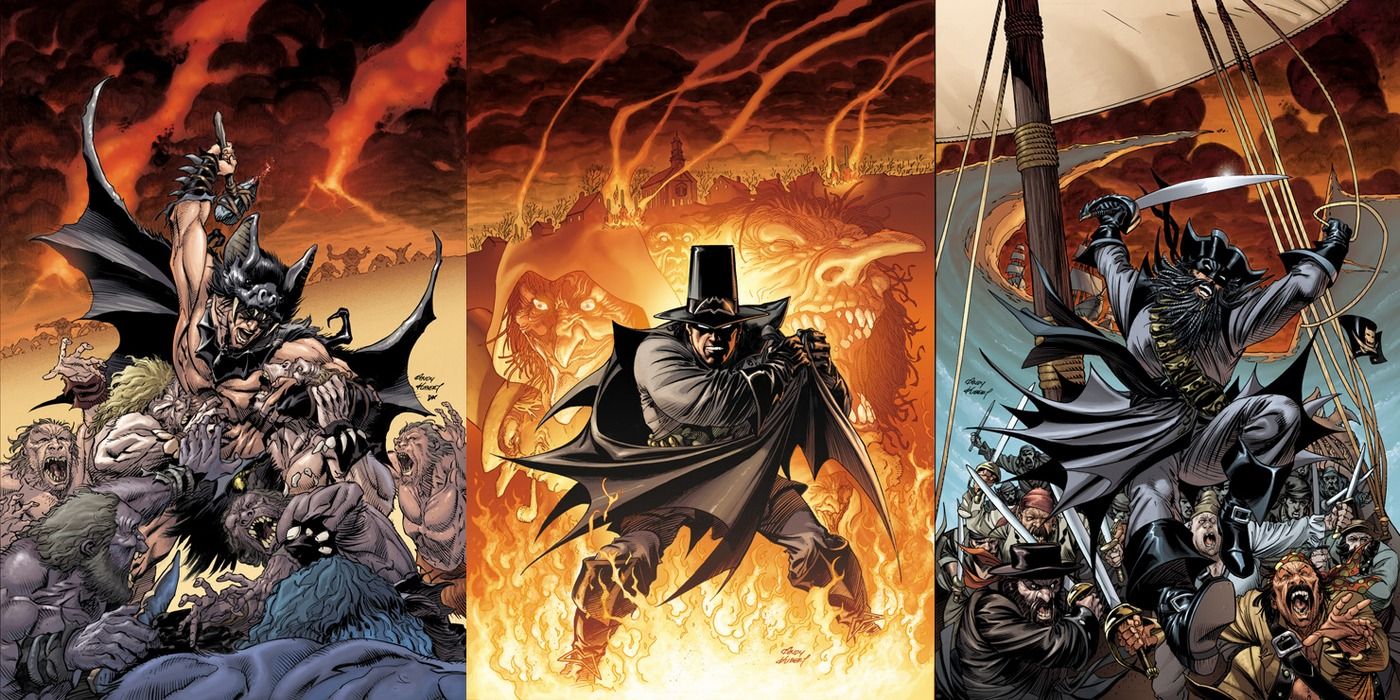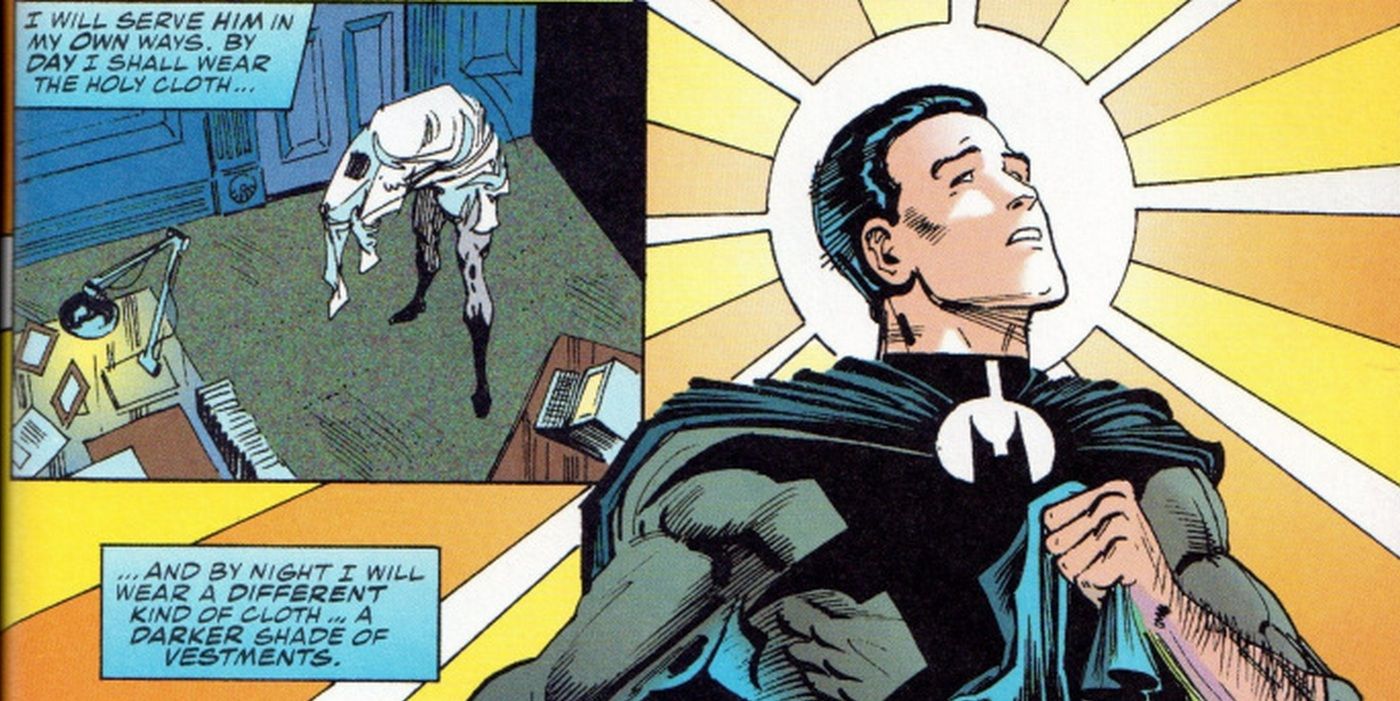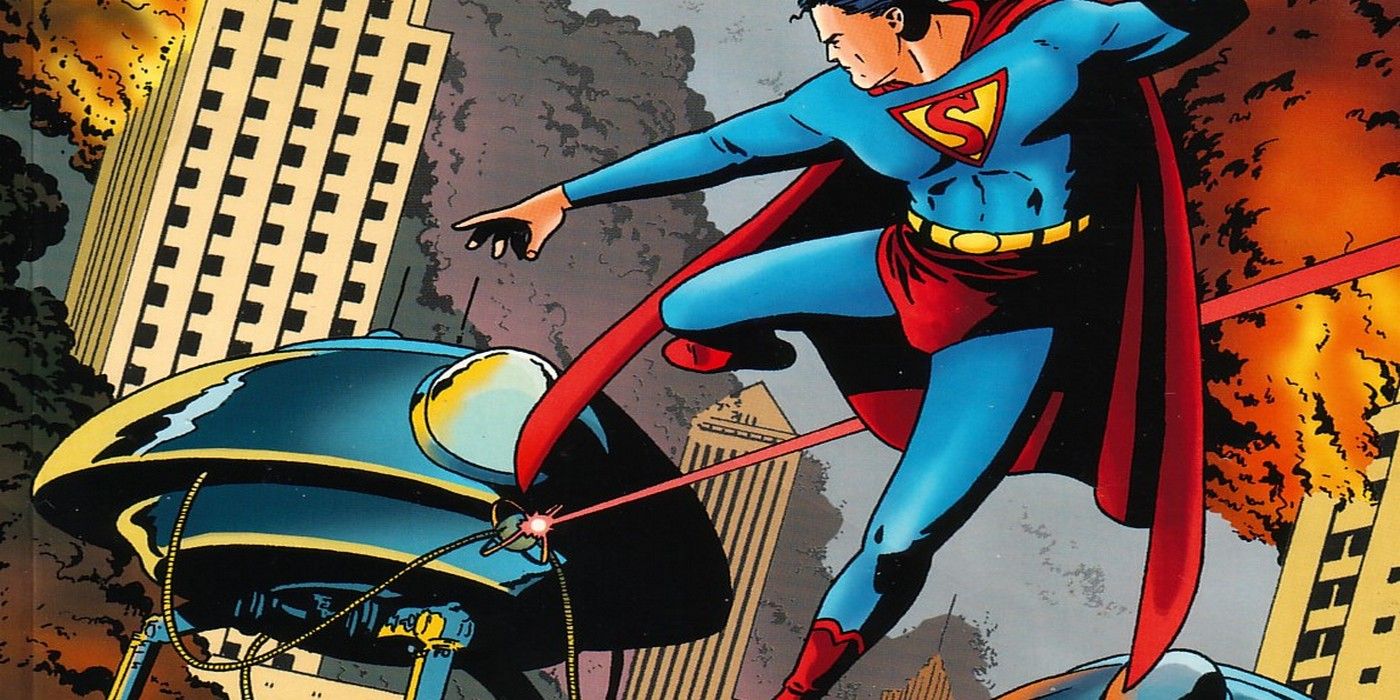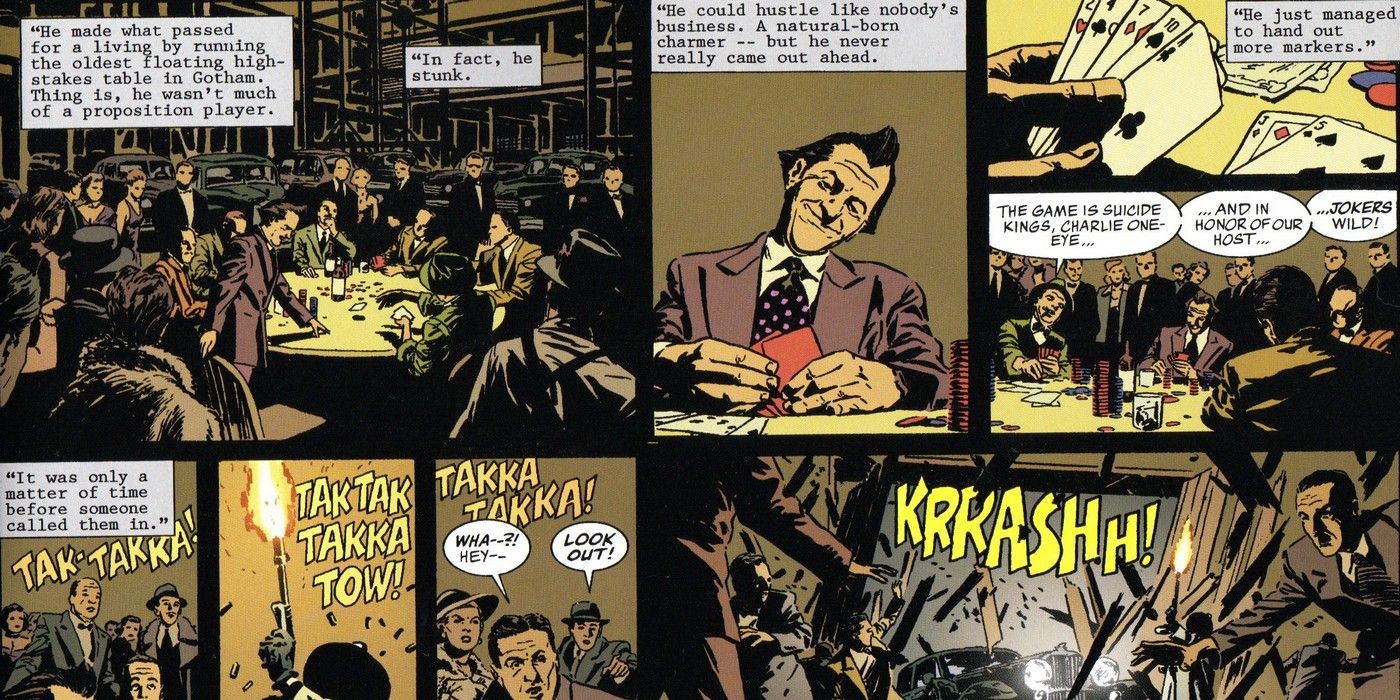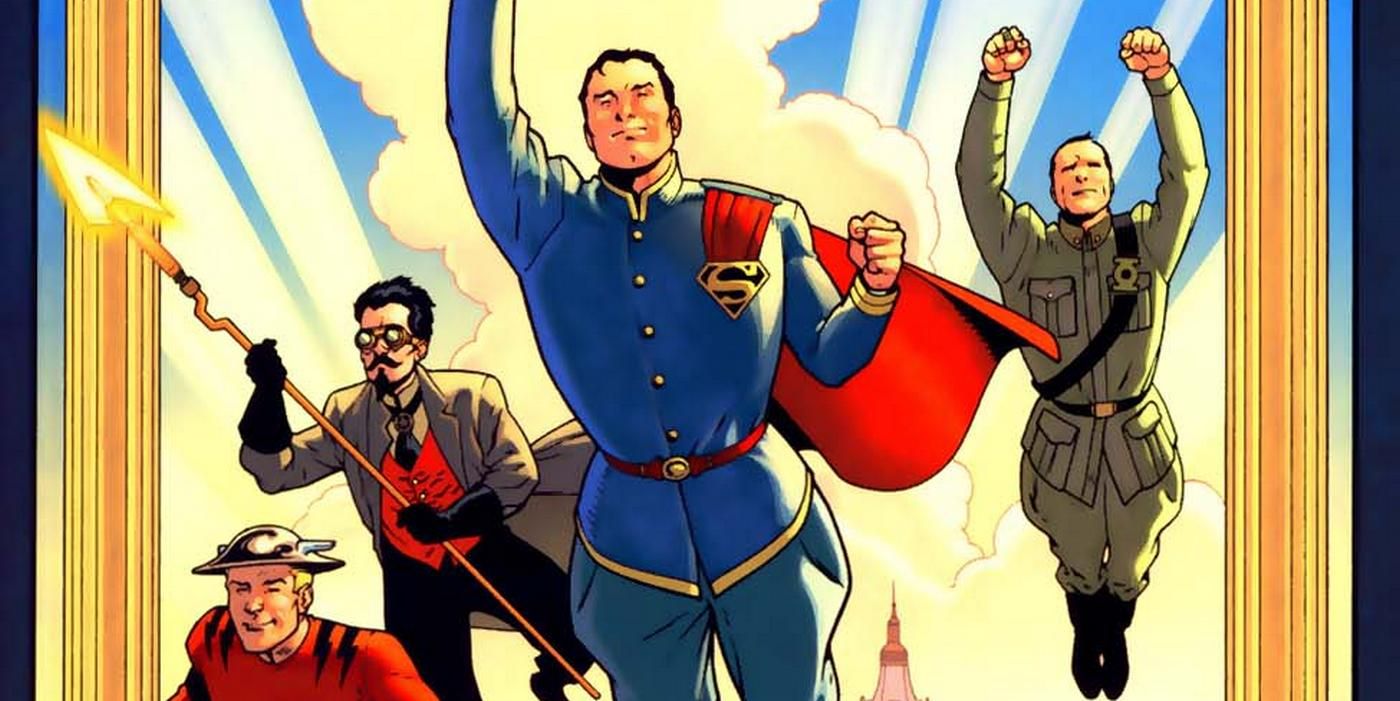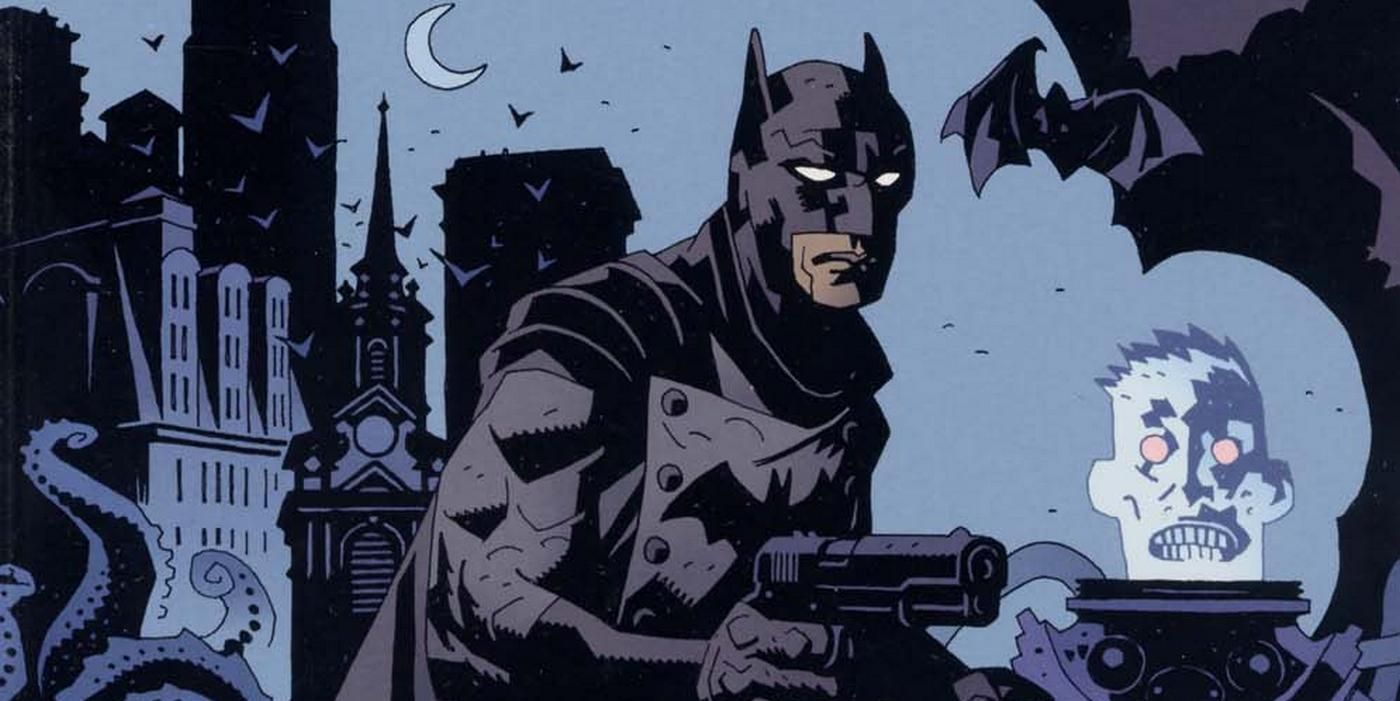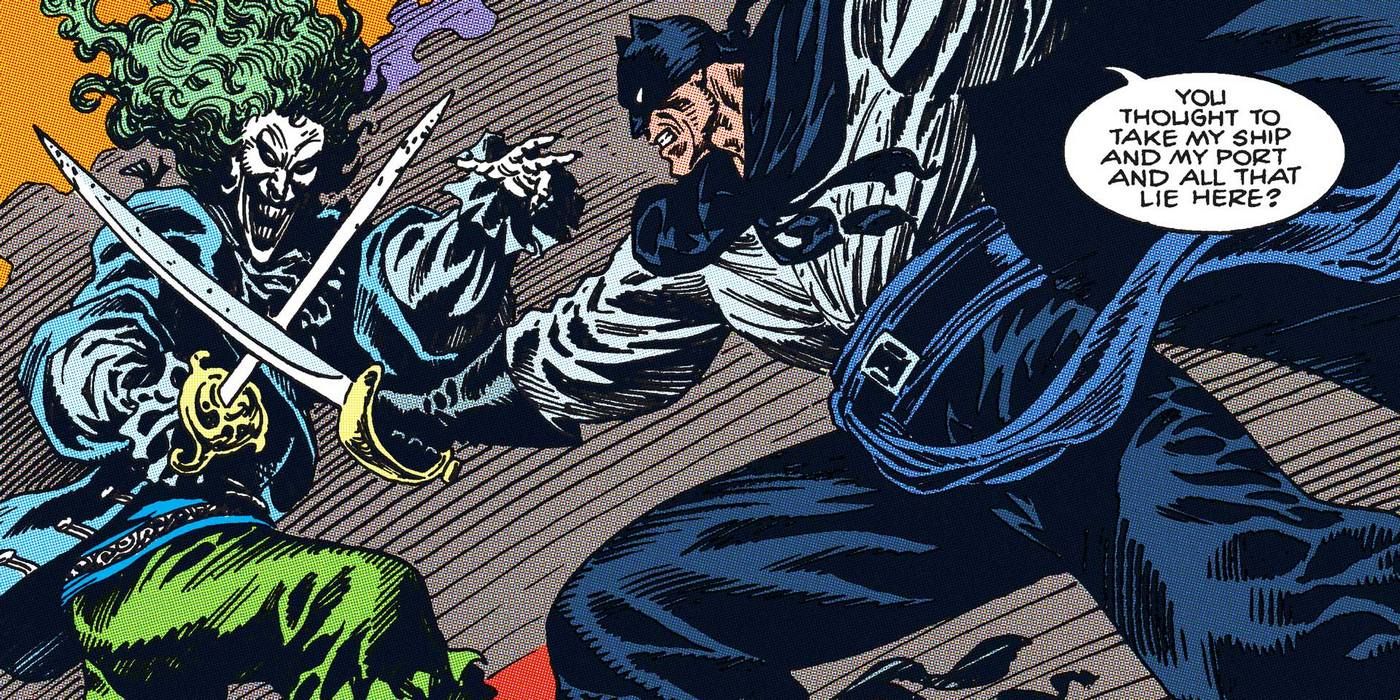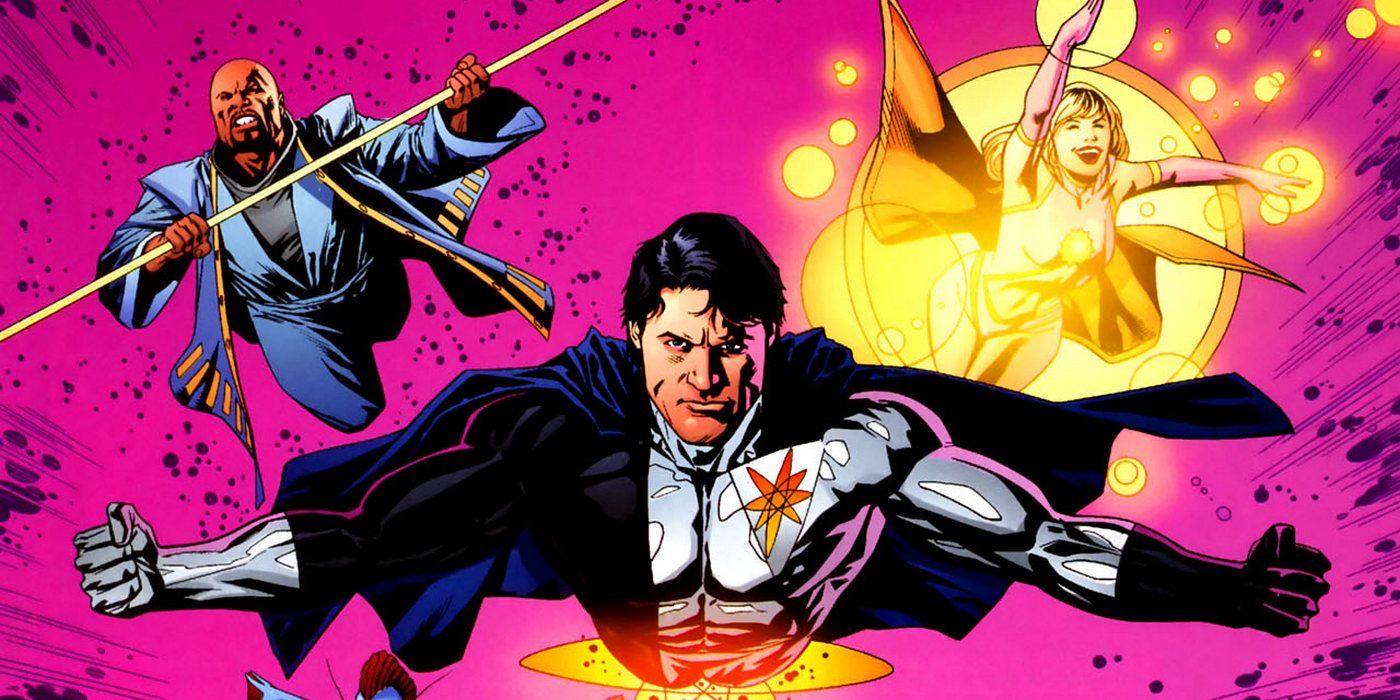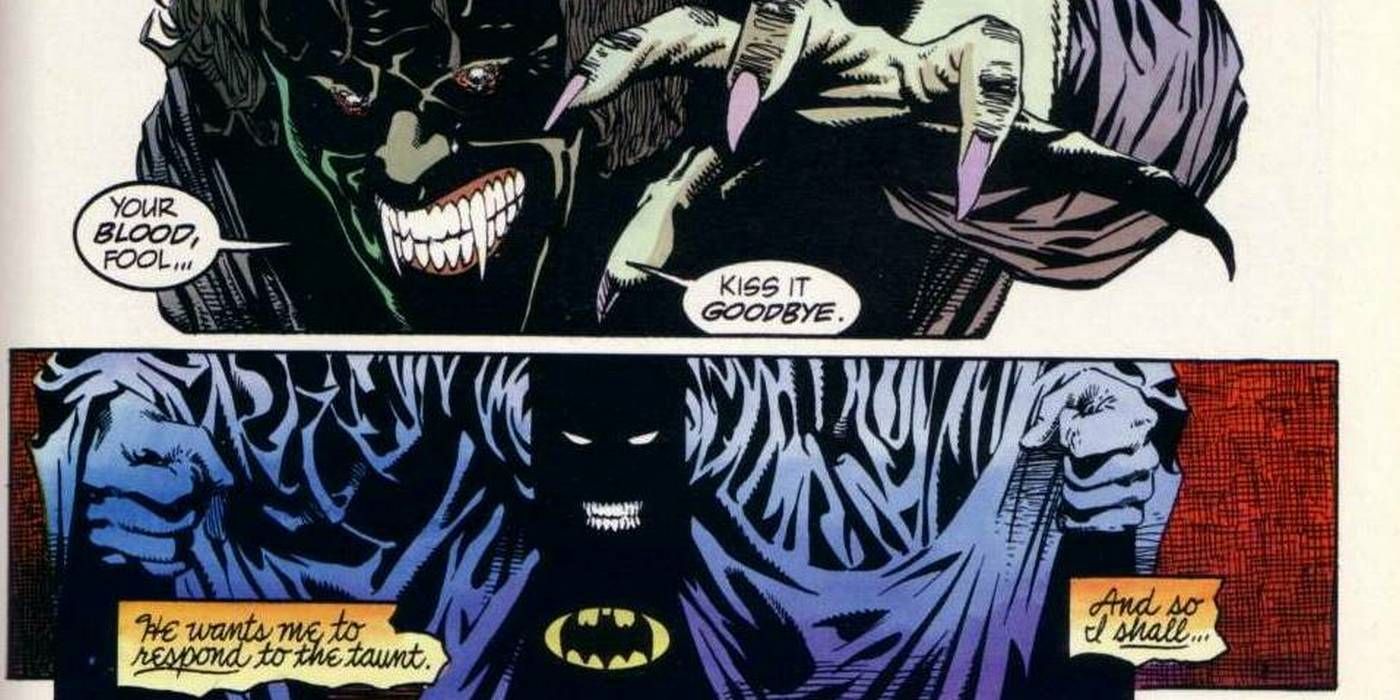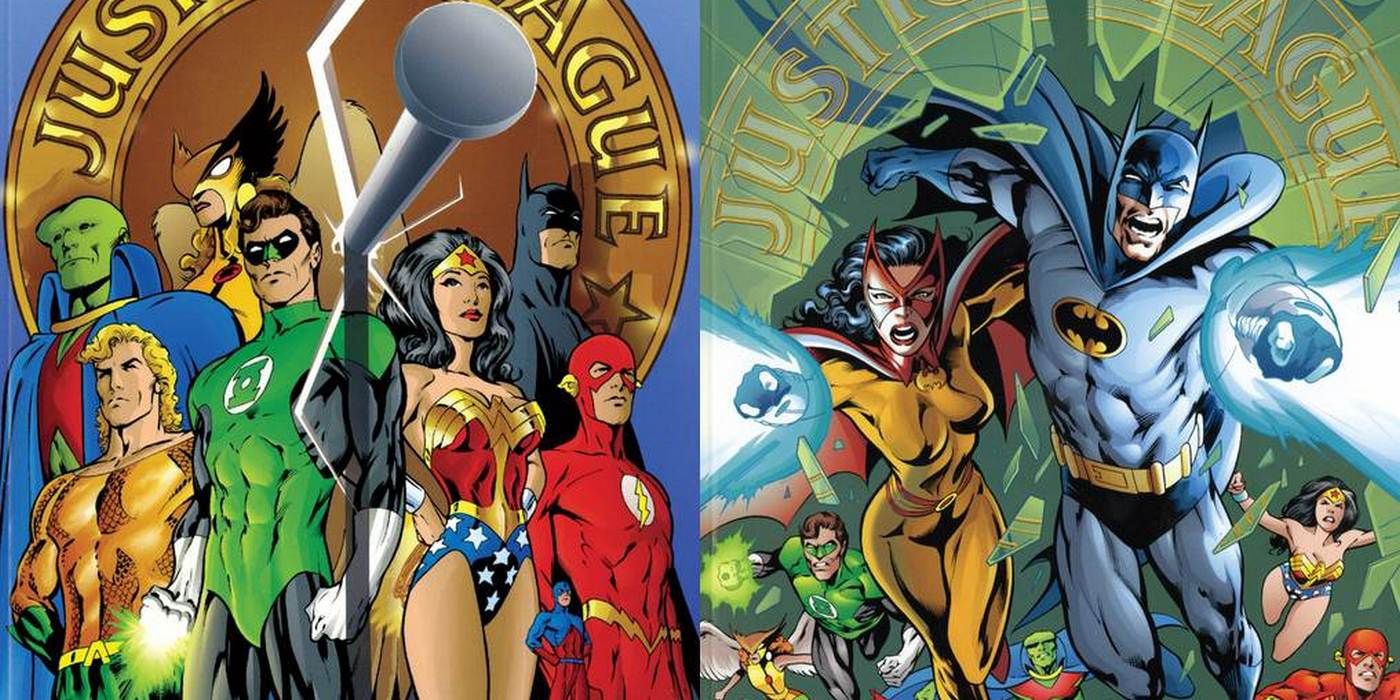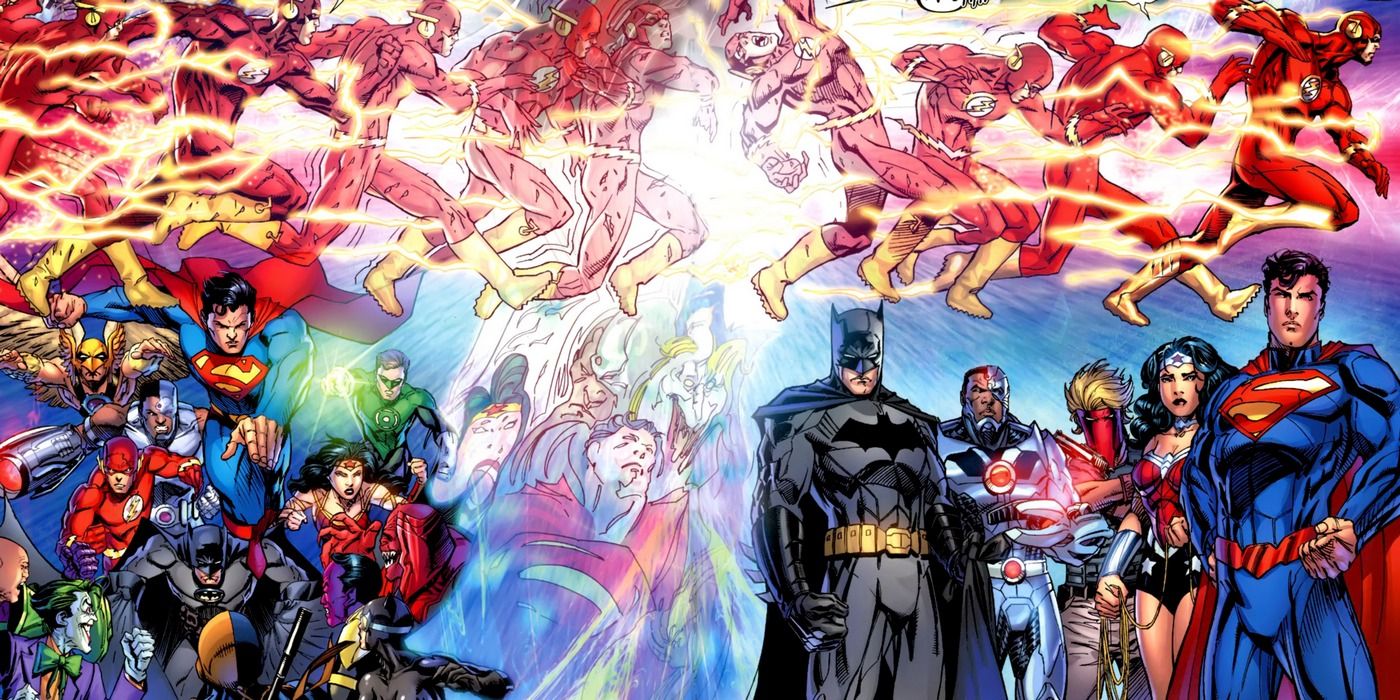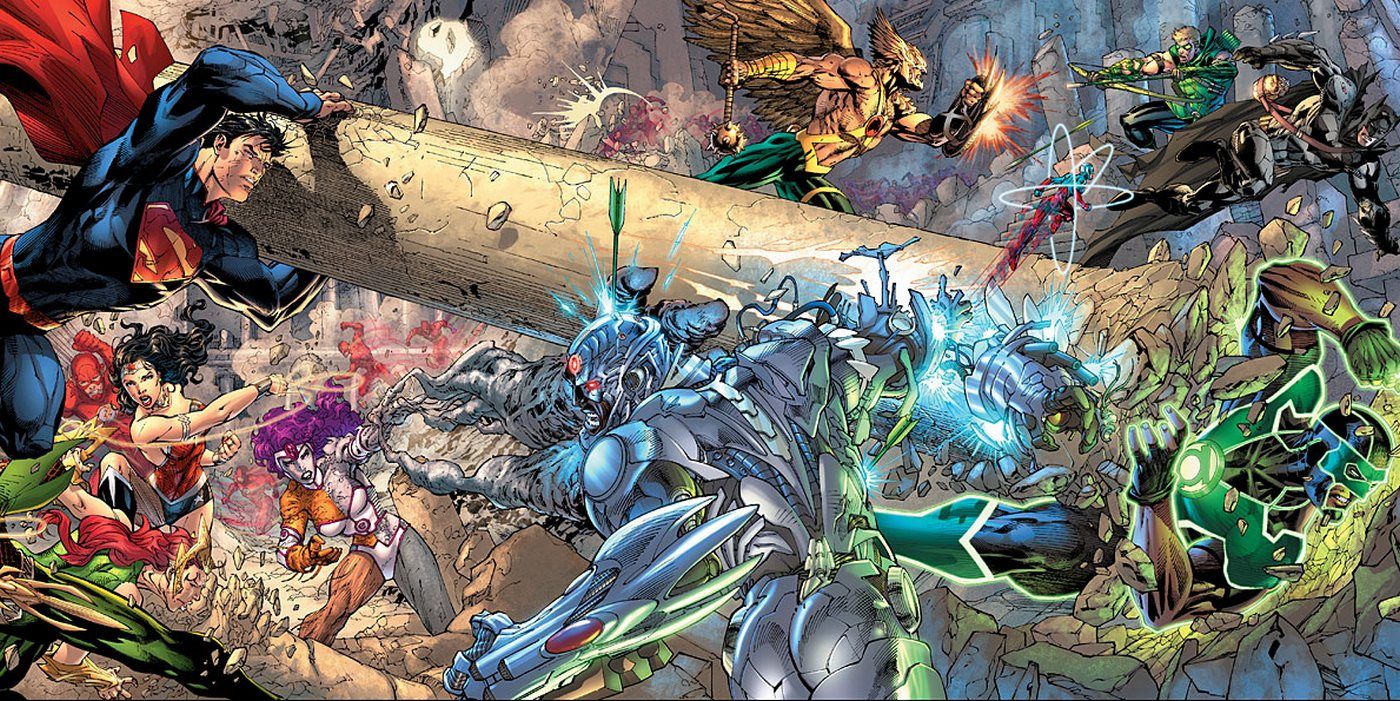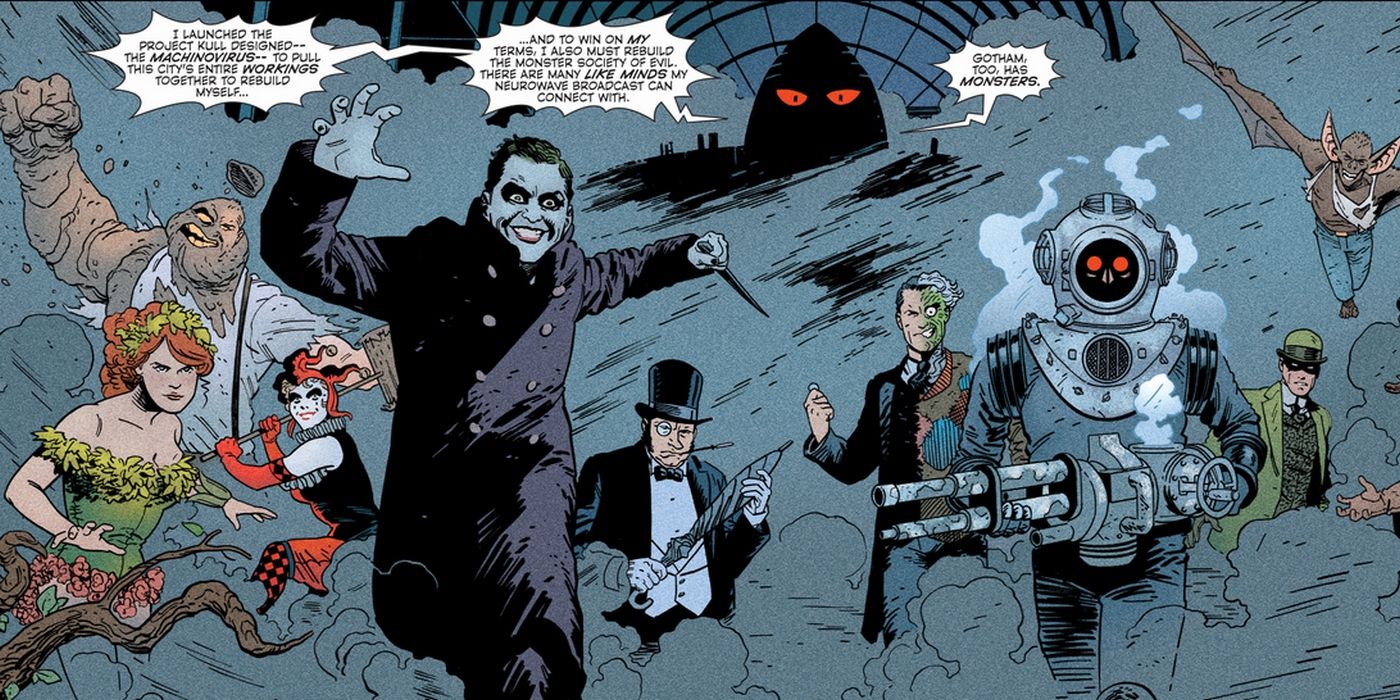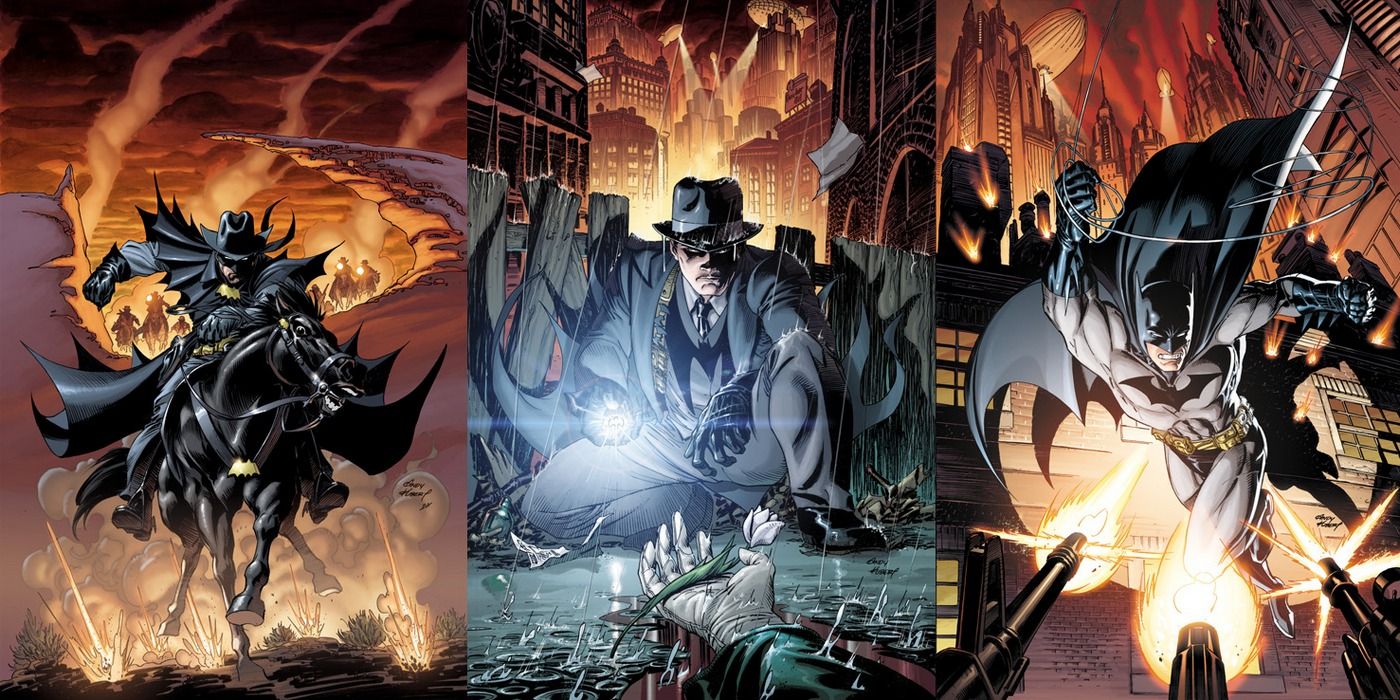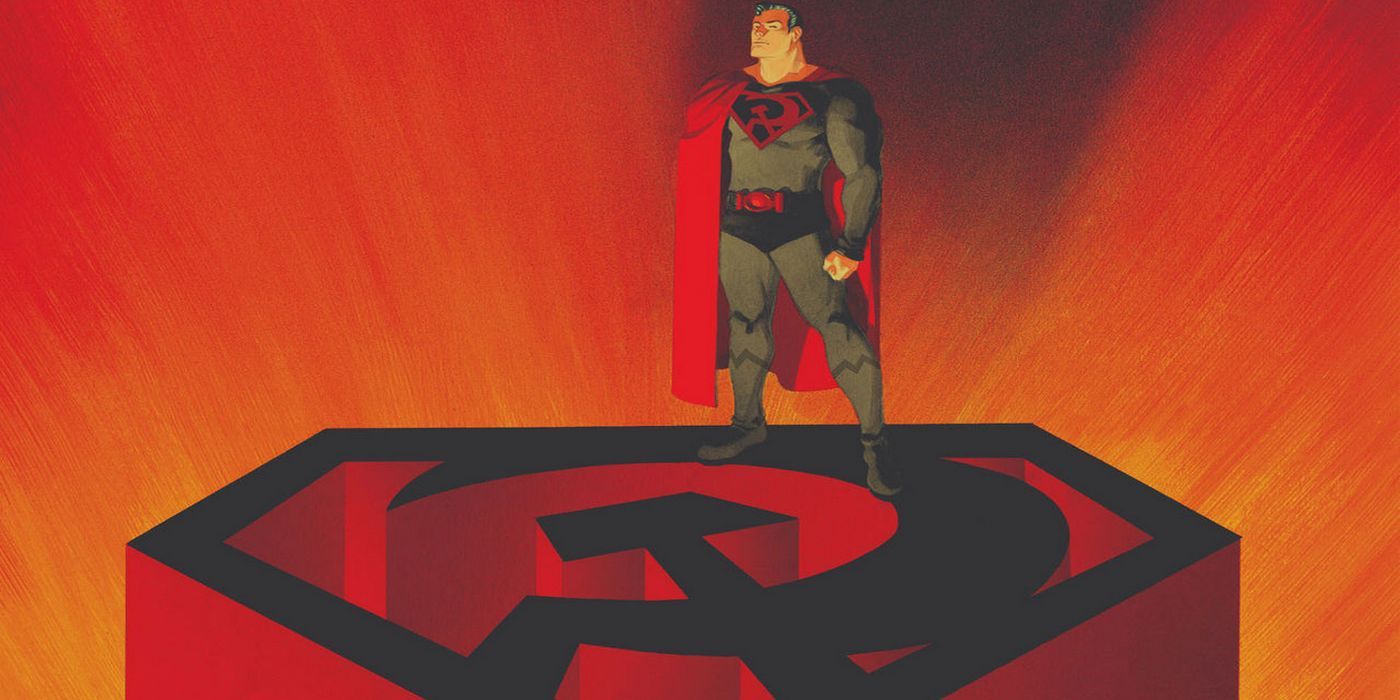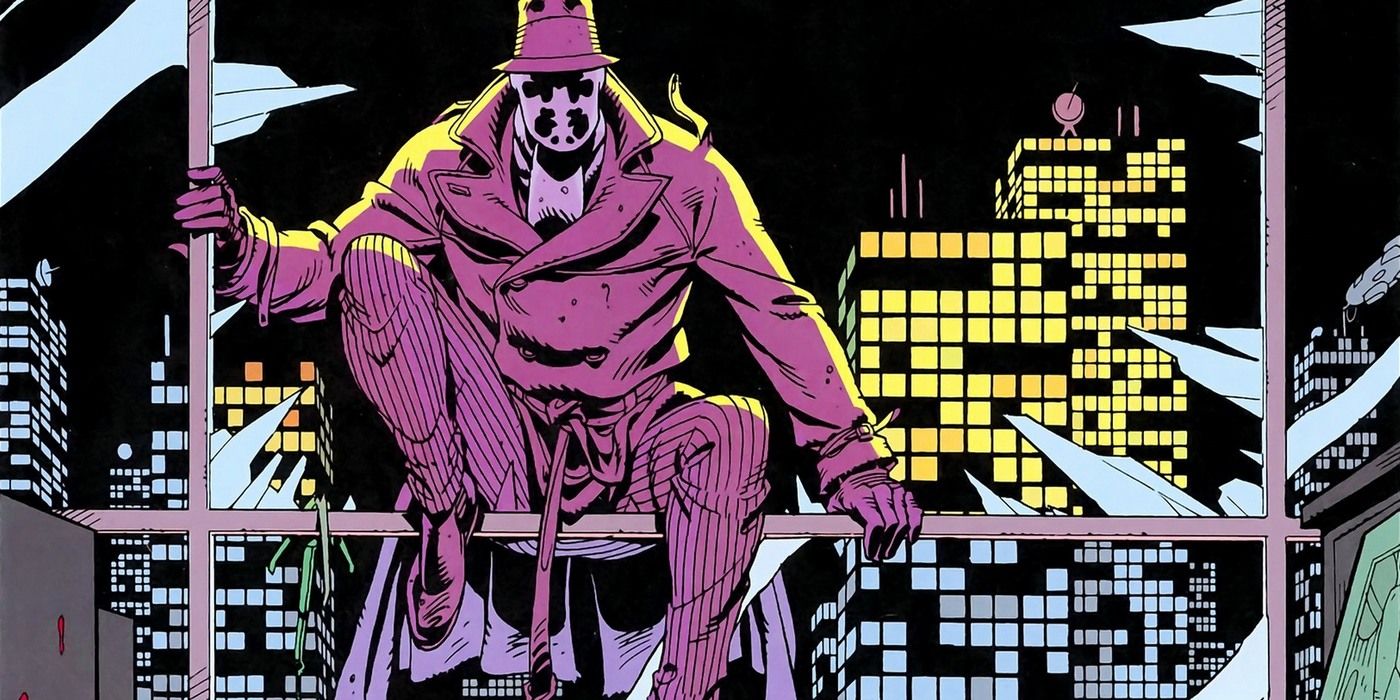At first glance, the DC Comics universe can seem bewildering. Throughout its history, DC universe has accumulated numerous heroes and villains who battle each other not only on different worlds, but in different realities as well.
Usually published by DC Comics' Elseworlds imprint, these stories re-imagine some of the most popular DC characters, exploring and exposing that which makes them unique. In the process, they also present the readers with alternate histories that are similar, yet different from our own.
With our list of 15 Best DC Comics Alternate Histories, we're taking a look at some of the most imaginative and most entertaining stories set in these other realities.
15. Bruce Wayne as a clergyman - Batman: Holy Terror (1991)
Although Gotham by Gaslight is widely considered to be the first Elseworlds story, Batman: Holy Terror is the first one to actually carry the Elseworlds logo. Its story takes place in an alternate history in which Oliver Cromwell lived long enough to solidify the rule of Puritans in 17th century England. Three centuries later, North America is a commonwealth run by an oppressive theocratic government. Bruce Wayne is preparing to join the clergy when he learns that his parents were murdered by the government because of their radical political beliefs. He becomes Batman to avenge them.
However, Batman soon learns that the sins of the theocracy go far deeper than political murders. He discovers the horrible fate of numerous other superheroes, who either became victims of cruel government experiments or were actually created by them. Written by Alan Brennert and drawn by Norm Breyfogle, Batman: Holy Terror was first published in 1991.
14. Superman vs. Martian invaders - Superman: War of the Worlds (1998)
War of the Worlds, a classic story of an alien invasion written by H. G. Wells, was first published in 1897. A century later, Roy Thomas and Michael Lark created Superman: War of the Worlds, a comic book inspired by this sci-fi masterwork as well as by the Orson Welles' 1938 radio-play broadcast that famously caused a wide-spread panic across the USA.
Superman: War of the Worlds pits the Man of Tomorrow against the Martian invaders attacking our planet in 1938. Superman is depicted as he was during the Golden Age, without the full range of powers granted to him by the later comic book writers. Another great inspiration for the look and feel of Superman: War of the Worlds were Max Fleischer's 1940s Superman cartoons, whose fluid animation and wonderful retro-futuristic designs remain a joy to behold. If you haven't already done so, you should definitely check them out.
13. Robin as a hardboiled private detective - Batman: Nine Lives (2002)
In 1940s Gotham City, Dick Grayson works as a private detective, and Commissioner Gordon suspects him for the murder of the night club owner Selina Kyle. As Grayson searches for the real killer, he navigates the seedy underbelly of Gotham City. What was Selina's connection with the rich playboy Bruce Wayne? Who's that crazy guy running around dressed like a bat?
Heavily inspired by the film noir, Batman: Nine Lives turns Batman's heroes and villains into shady characters straight out of the novels by Raymond Chandler or Dashiell Hammett. Joker is a failed Las Vegas card dealer, Edward Nigma is an embezzler while Harvey Dent is an unscrupulous lawyer. Yet another Elseworlds graphic novel, Batman: Nine Lives was written by Dean Motter and drawn by Michael Lark. It was published by DC Comics in 2002.
12. Steampunk Justice League - JLA: Age of Wonder (2003)
JLA: Age of Wonder presents a world in which Superman lands on Earth in the 1850s and makes his first public appearance at the 1876 Centennial Exposition. Soon enough, he starts working with the greatest minds of his time such as Thomas Edison, Nikola Tesla and Lex Luthor. But decades later, Superman is worried to see their inventions used by the great powers to build ever more devastating weapons. It's up to Superman and his League of Science to prevent the outbreak of World War One.
Published in 2003, JLA: Age of Wonder is a two-issue comic book mini-series written by Adisakdi Tantimedh, with art by Galen Showman and P. Craig Russell. Inspired by the steampunk subgenre, it presents the familiar DC superheroes - such as Green Lantern, Starman and Flash - as heroic Victorian scientists fighting the good fight for the betterment of mankind.
11. Batman vs Cthulhu - Batman: The Doom That Came to Gotham (2000)
The world of H. P. Lovecraft's Cthulhu Mythos is similar to our own. Similar, that is, except for all the sanity-blasting alien beings hidden in the wilderness and known to us only through the ravings of the madmen. Set in the early decades of the 20th century - when Lovecraft's stories take place - Batman: The Doom That Came to Gotham has Batman investigate an ancient doomsday cult led by the maniacal necromancer Ra’s Al Ghul.
First published in November of 2000 as a 3-issue miniseries, Batman: The Doom That Came to Gotham was written by Mike Mignola and Richard Pace, with illustrations by Troy Nixey and Dennis Janke. Mignola creates the story that pits Batman against the Great Old Ones and its servitors while twisting the familiar Batman characters into grotesque shapes familiar to all the fans of Mignola's Hellboy.
10. Pirate Batman - Batman: Leatherwing (1994)
Batman as a swashbuckling pirate? In a word: awesome!
Batman: Leatherwing presents the Caped Crusader as a 17th century privateer capturing enemy ships for King James II of England. An impoverished nobleman, Captain Leatherwing protects the honor of his name by hiding under a mask while sailing the high seas abroad his ship, Flying Fox. Leatherwing hopes to earn enough treasure to become able to buy back his family's lost estate in England. However, his treasure is coveted by the beautiful and deadly Capitana Felina and by her disfigured insane partner, a notorious pirate known only as The Laughing Man.
But Leatherwing isn't alone in his fight. He's accompanied by trusty Italian manservant Alfredo as well as by Robin Redblade, Prince of the Urchins. Written by Chuck Dixon, Batman: Leatherwing was first published in 1994 in Detective Comics Annual #7, with the beautiful art by Enrique Alcatena.
9. Cuban Missile Crisis Goes Kaboom - Tangent Comics (1997)
Tangent Comics was a DC Comics imprint launched in 1997. Created and developed by Dan Jurgens, it presents a world in which super-powered beings have much bigger - and sometimes more fatal - influence on politics, economics, technology and science. Tangent universe history diverges dramatically during the 1962 Cuban Missile Crisis, when the interference by the American superhero Atom causes a limited nuclear exchange between USA and Soviet Union that destroys Cuba and Florida.
This Tangent Universe is explored through a series of one-shot comic book stories that also re-imagine various DC Comics characters. In this reality, Wonder Woman is an exiled warrior from another world, Flash is the first person born in space, possessing unique light-based powers while Green Lantern is a mysterious woman with an ability to temporarily raise the dead. Although Tangent Comics imprint stopped publishing in 1998, Tangent Universe was briefly revived in Tangent: Superman's Reign, published in 2008.
8. Vampire Batman - Batman & Dracula trilogy (1991)
What if Batman was a vampire? It's an idea that is as clever as it is simple. In 1991, Elseworlds imprint published Batman & Dracula: Red Rain, a graphic novel written by Doug Moench and drawn by Kelley Jones. In it, Dark Knight takes on Count Dracula himself. But in order to defeat this ultimate nocturnal predator as well as his blood-sucking minions, Batman has to become a vampire himself. And who better to provide him with the blood he needs then all the monstrous villains he fought for so long?
Grim, grisly and grotesque, Batman & Dracula takes Batman's already dark world and makes it pitch black. Readers loved it. Batman & Dracula: Red Rain was quite popular. Soon enough, two sequels followed: Batman: Bloodstorm and Batman: Crimson Mist. All three were later collected and published as Tales of the Multiverse: Batman - Vampire.
7. Superman never gets adopted by Kents - JLA: The Nail (1998)
So it was a kingdom was lost – all for want of a nail.
In JLA: The Nail, Jonathan and Martha Kent experience a flat tire caused by a nail. Because of that, they never retrieve Superman from his rocket ship. Thirty years later, Justice League sorely lacks Superman's power and charisma to win the support of the people. Meanwhile, mayor of Metropolis Lex Luthor and a former hero Oliver Queen keep clamoring about an alien plot to subvert humanity.
When vicious acts of terrorism get attributed to superheroes, the public turns against them, allowing Luthor to seize control over the USA. It's up to regular humans like the intrepid reporter Lois Lane, Dr. Lana Lang and the Kent family to help superheroes uncover Luthor's plot against the Justice League. JLA: The Nail was written and drawn by Alan Davis. Published in 1998, it was followed in 2004 by a sequel titled JLA: Another Nail.
6. The world without the Justice League - Flashpoint (2011)
In a world without Superman and the Justice League, superheroes are dangerously divided. All across the ruins of Europe, Wonder Woman's Amazons wage a devastating war against the Emperor Aquaman and his Atlantean Empire. An outsider in this world, Flash has an unique understanding of this world's problems. Unfortunately, while traveling to this reality, he lost all of his powers.
Published in 2011, Flashpoint is a five-issue limited series by Geoff Johns and Andy Kubert that follows Flash - Barry Allen - as he attempts to regain his lost powers, learn the true causes behind the global devastation and save this world's superheroes not only from their enemies, but also from themselves. Far from being a stand-alone story, Flashpoint is connected with a number of other tie-in titles exploring the various heroes and villains of this alternate reality. Flashpoint ended, only to lead directly into...
5. The New 52 (2011)
In Flashpoint, Barry Allen learns that his own reality - called New Earth - is closely connected to two alternate universes: Earth-13 and Earth-50. By the end of Flashpoint, these three universes merge into one, creating a single shared DC universe.
This merger goes beyond the pages of the comic books and into our own reality. Debuting in September of 2011, The New 52 was a DC Comics' relaunch of its entire line of monthly superhero comic books that united several previously unrelated comic book universes. While the standard DC universe is by far the most well-known, Earth-13 resembles the settings of some Vertigo Comics - an imprint of DC that published Preacher, Lucifer and Hellblazer. Similarly, Earth-50 is inspired by the comic books published by WildStorm imprint, such as Gen¹³, The Authority and Planetary. The New 52 continuum lasted until 2016, when DC Comics announced yet another (sort of) relaunch, entitled DC Rebirth.
4. Batman vs Jack the Ripper - Gotham by Gaslight (1989)
Despite being published without the Elseworlds imprint's logo, Gotham by Gaslight is today widely considered to be one of the first Elseworlds stories. First published in 1989, this graphic novel by Brian Augustyn and Hellboy's creator Mike Mignola takes place exactly one hundred years before. As a murderer stalks the city's women, police begin to suspect that Batman may be the culprit. However, it soon turns out that the real culprit is none other than Jack the Ripper!
Gotham by Gaslight was followed two years later by Batman: Master of the Future. Inspired by the sci-fi novels of Jules Verne - especially Robur the Conqueror and The Master of the World - it follows an attempt by the brilliant, yet insane air pirate Alexandre LeRoi to destroy Gotham City before it enters into the 20th century. Naturally, Batman is the only one who can stop the megalomaniac madman and his airship.
3. Batman vs. history - Batman: The Return of Bruce Wayne (2010)
Batman: The Return of Bruce Wayne begins during the space- and time-shattering events of the Final Crisis. After Batman gets zapped by the Darkseid's Omega Beams, he is sent all the way back to the Paleolithic. Stuck in the Stone Age, Batman has to fight his way through the entire course of human history to return back to the 21st century.
Penned by Grant Morrison, this epic quest has Batman shape the world around him as he travels through time. His appearance in the Stone Age inspires a bat-worshipping cult whose treasures Batman discovers while fighting Blackbeard, a notorious 18th century pirate. While living in the 17th century village of Gotham, Batman meets his ancestor Nathaniel Wayne. In 19th century Gotham, Batman confronts Vandal Savage, an immortal villain whom he first fought way back in the Stone Age. Batman: The Return of Bruce Wayne was published as a six-issue limited series in 2010.
2. Soviet Superman - Superman: Red Son (2003)
What if, instead in Kansas, Superman's rocket ship landed on a collective farm in Soviet Ukraine? Such is the premise of Mark Millar's Superman: Red Son, featuring a world in which Superman grows up to become a champion of Stalin and, after the latter's death, the leader of the Soviet Union.
Like a funhouse mirror, Superman: Red Son presents us with a distorted reflection of the familiar DC universe. Superman's childhood love Lana Lang is a loyal Party member Lana Lazarenk, while Batman is a contra-revolutionary vigilante avenging the brutal deaths of his parents, murdered by the secret police. Lex Luthor is a brilliant inventor and businessman who becomes the US president and deliberately escalates the cold war between the USA and the Superman's Soviet Union. Readers might very well expect the story to end in a full-scale nuclear war, but its true ending turns out to be far more imaginative and poignant than that.
1. Watchmen (1986)
In this alternate 1985, Richard Nixon is still the US president, New York City is a cesspool of crime and the whole planet is on a brink of a nuclear war. But that's what happens in a world where superheroes are real. Once, vigilantes like Nite Owl, The Comedian and Silk Spectre were adored by the public and the press, but the appearance of the god-like Doctor Manhattan changed not only the superhero game, but the entire course of the world's history. Can the world be saved? Even more importantly, does it deserves to be saved?
Watchmen was written in 1986 by Alan Moore, with a stunningly detailed art by the artist Dave Gibbons. Today, it is widely considered to be one of the best comic books ever published. In 2005, Time magazine listed it among the 100 all-time greatest novels, while the 2009 movie adaptation by Zack Snyder earned over $185 million at the box office. Geoff Johns, the chief creative at DC Comics, announced in 2016 plans to connect the world of Watchmen over the next two years with the wider DC Comics universe in a new series called DC Rebirth.
-
What are your favorite DC Comics stories set in alternate histories? Share them with us below!

